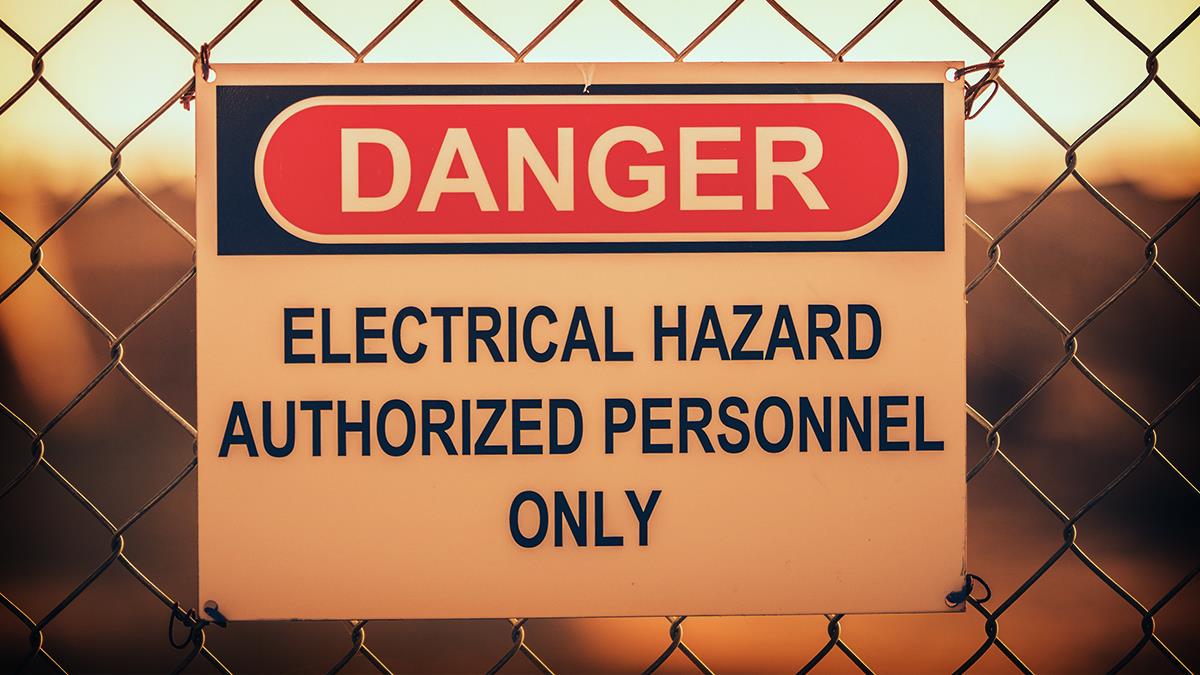
For those responsible for electrical maintenance at a facility, ensuring the safety of personnel while optimizing the performance, reliability, and longevity of electrical systems is of utmost importance.
There are two key standards – NFPA 70E and NFPA 70B – that provide essential guidelines for electrical safety and maintenance practices that can significantly enhance worker safety and the reliability of electrical assets. These standards were established by the National Fire Protection Association (NFPA) and are widely recognized as the go-to resources in the industry.
NFPA 70E: Standard for Electrical Safety in the Workplace
NFPA 70E is the most recognized of the two standards and focuses on electrical safety-related work practices to protect workers from hazards such as electric shock, arc flash, and arc blast. It provides a framework for identifying risks, using personal protective equipment (PPE), and implementing safe work practices.
Following NFPA 70E enhances worker safety by:
- Risk Assessment and Hazard Identification: NFPA 70E mandates thorough risk assessments before any work on electrical systems begins. This includes identifying potential electrical hazards and evaluating the level of risk involved in specific tasks. By adhering to this process, companies can better manage and mitigate risks, reducing the likelihood of electrical injuries and fatalities.
- Proper Use of PPE: The standard provides detailed guidelines for selecting and using appropriate PPE based on the hazard level. Workers are protected against electrical hazards through the correct use of insulated gloves, face shields, arc-rated clothing, and other protective gear. This ensures that personnel are properly equipped to handle high-risk tasks.
- Training and Qualification Requirements: NFPA 70E emphasizes the importance of training workers on electrical safety, ensuring that only qualified personnel perform tasks involving energized systems. Workers trained in safely handling electrical equipment are less likely to make errors that could result in injuries or equipment damage.
- Establishing Electrically Safe Work Conditions (ESWC): One of the core principles of NFPA 70E is to eliminate hazards by establishing an electrically safe work condition whenever possible. This includes de-energizing equipment, testing for the absence of voltage, and grounding circuits. These steps ensure that workers are not exposed to live electrical conductors, significantly reducing the risk of arc flash and shock incidents.
NFPA 70B: Standard for Electrical Equipment Maintenance
While NFPA 70E addresses safety during electrical work, NFPA 70B focuses on the maintenance of electrical equipment to ensure reliability and longevity. As of January 2023, NFPA 70B transitioned from a recommendation to a standard, which can be enforceable. Implementing NFPA 70B improves electrical asset reliability through the following practices.
New revisions to NFPA 70B include updates to:
- Preventive Maintenance Programs: NFPA 70B outlines the importance of a structured electrical preventive maintenance program for electrical equipment, including transformers, circuit breakers, motors, and switchgear. Regular maintenance ensures that equipment operates optimally and reduces the likelihood of unexpected failures that could lead to downtime, costly repairs, or safety incidents.
- Inspection and Testing: The standard recommends regular inspections and testing of electrical systems to identify wear, degradation, or impending failures. These preventive measures help catch issues early before they escalate into more significant problems that could compromise the system’s reliability or safety.
- Documenting Maintenance Activities: NFPA 70B emphasizes the importance of keeping accurate records of maintenance activities. A detailed log of inspections, repairs, and modifications allows companies to track the performance and condition of their equipment over time. This historical data is invaluable for making informed decisions about replacements or upgrades and ensuring compliance with industry regulations.
- Condition-Based Maintenance (CBM): NFPA 70B supports using condition-based maintenance strategies, such as ultrasound and infrared, where equipment is maintained based on operating conditions rather than on a fixed schedule. By using CBM diagnostic tools, maintenance teams can monitor equipment health in real time, optimizing maintenance efforts and preventing unexpected failures.
- Multi-Technology Approach: Utilizing more than one inspection technology increases the chance of finding failure modes that are not detectable with just one technology. Using both airborne ultrasound and infrared thermography, you will find both ionization-based (corona & partial discharge) and resistance-based failure modes. Use of both technologies will detect partial discharge, corona, tracking, and arcing.
- Qualified Personnel: The latest version of NFPA 70B goes into great detail on what qualifications people should have and maintain to safely and effectively inspect energized electrical assets. These inspections shall only be performed by qualified personnel.
Integrating NFPA 70E and NFPA 70B for Enhanced Safety and Reliability
Together, NFPA 70E and NFPA 70B create a safe, effective, and holistic approach to electrical safety and a framework for electrical asset maintenance. By combining the safety practices of NFPA 70E with the reliability-focused maintenance strategies of NFPA 70B, companies can achieve:
- Reduced Downtime: Properly maintained equipment is less likely to fail, minimizing unplanned shutdowns and disruptions to operations.
- Lower Maintenance Costs: Proactive maintenance helps prevent costly repairs by addressing issues before they escalate to catastrophic failures.
- Improved Worker Morale and Confidence: Workers who operate in a safe environment where electrical hazards are well-managed are more confident and productive. This leads to a positive culture of safety and higher job satisfaction. Think “alarm fatigue.”
- Extended Equipment Life: Regular maintenance extends the lifespan of electrical assets, delaying the need for replacements and optimizing capital investments.
Conclusion
With the age of our electrical infrastructure in both generation and distribution, adhering to standards like NFPA 70E and NFPA 70B is not just about compliance; it is about creating a safer, more efficient workplace and reducing interruption to operations. Additionally, using a multi-technology approach to your condition-based maintenance strategy will give you extra coverage and increase the chances of finding electrical failure modes much sooner.
By following NFPA 70E, companies ensure that their workers are protected from electrical hazards, while NFPA 70B can help maintain electrical assets' reliability and performance. This combined approach to safety and maintenance ultimately leads to reduced risks, lower costs, and greater operational efficiency, making these standards essential for any organization to optimize its electrical systems.





